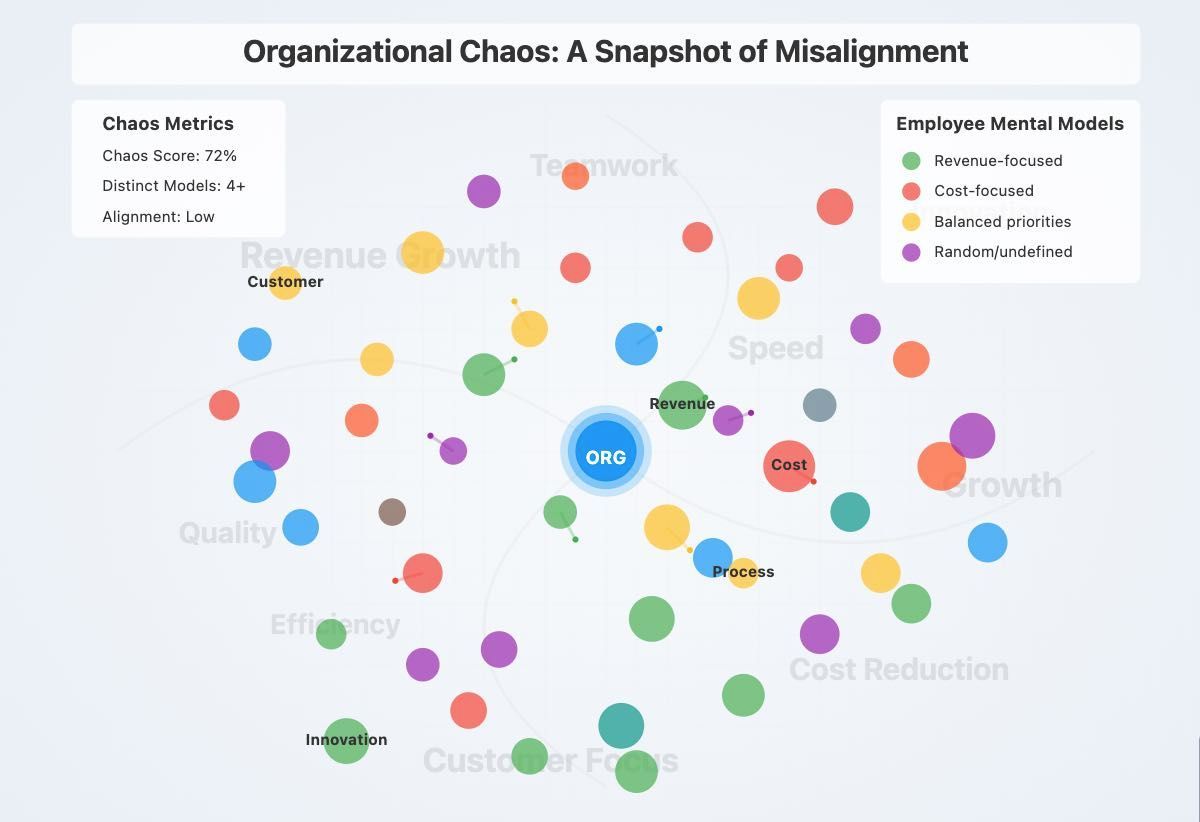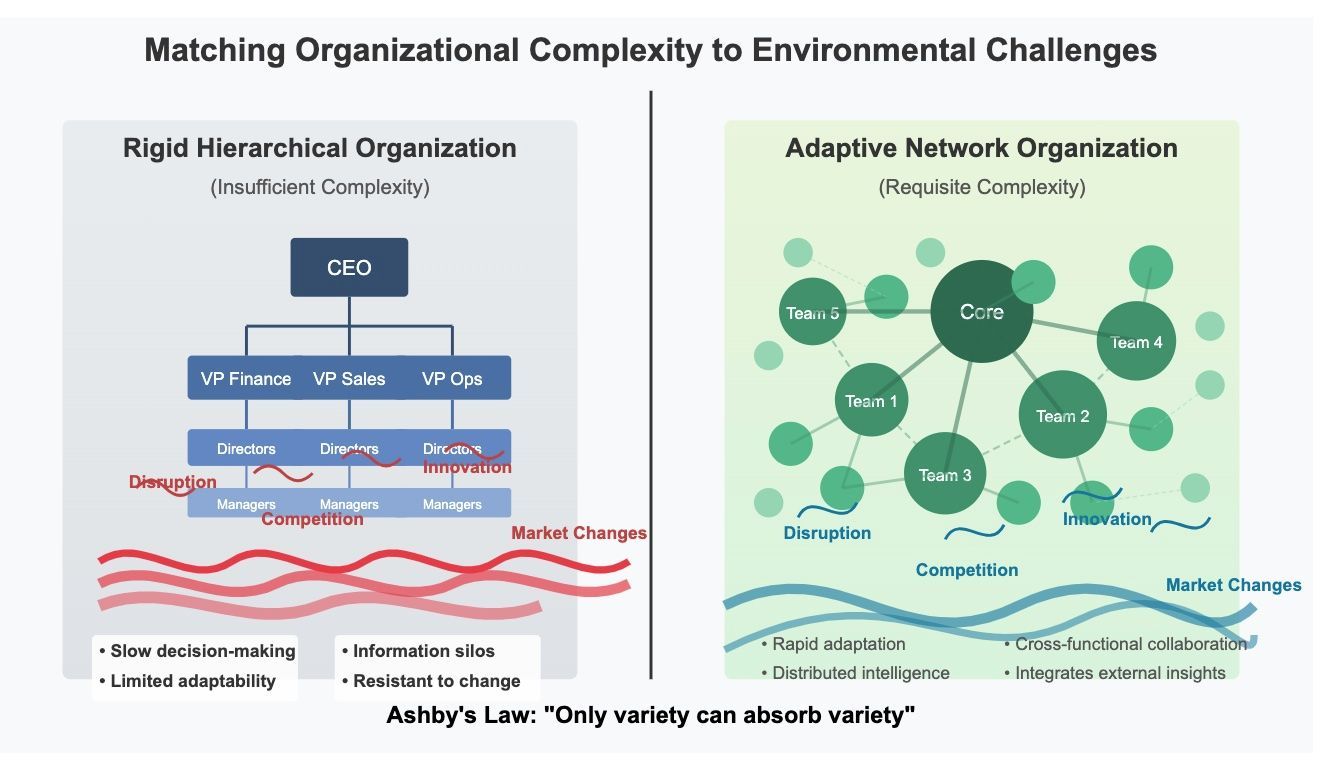The True Cost of Misalignment: How Organizations Can Bridge the Gap

The $8.9 Trillion Problem
Misalignment between a company's goals and the humans working to achieve them costs the global economy $8.9 trillion annually—approximately 9% of the global GDP.
But the human cost is even more staggering: 80% of working humans feel dissatisfied and wish for a different job. This isn't just an economic problem; it's a human one.
As we navigate an increasingly complex business landscape, defining a new framework for human alignment isn't just desirable—it's critical. While reducing economic waste is a positive byproduct, the true goal is creating environments where humans can thrive.
The Misalignment Challenge
Misalignment between humans is inevitable. Each person brings their unique perspective on success, along with their individual biases and strengths. Currently, there's no simple way to visualize how these beliefs align—or don't align—with organizational goals.
The impact? Trillions of dollars in wasted resources and opportunities.
In most organizations, no fixed coordinates or reference points exist. Each employee follows their own trajectory and direction based on their perceptions and mental models. The organization often has little gravitational pull toward the Ideal Final Outcome. (See Misalignment Chart)
Defining Alignment
So what exactly is alignment?
Alignment is clarity in:
- The Ideal Final Outcome for an organization (sometimes called Vision, Mission, or Goals)
- The challenge we're overcoming first, then second and so on
- How a complete system is required to achieve the outcome
- The journey for each human involved
Most importantly, alignment lives between perspectives, not in them.
System Completeness: A Framework for Alignment
To achieve the kind of alignment that doesn't waste trillions of dollars, we need to apply "system completeness" to the problem. This framework proposes that any successful endeavor must have all the necessary parts—just as a car without fuel won't move, regardless of how well-designed it is.
The Six Components of System Completeness
- Strategic Direction (Directionality): The high-level coordination between the organization's long-term mission and vision, with a clear understanding of misalignments with market and customer expectations.
- Metric Alignment: As W. Edwards Deming said, "The most important numbers are unknown and unknowable," referring to all qualitative human variables that transform businesses from having merely complicated problems to complex ones. We must measure what's important, not just what's easy—defining importance by how useful metrics are in steering the company toward ideal directionality.
- Change Alignment: Unlike traditional alignment tools focused on stability through frameworks, modern change alignment addresses the inherent complexity of today's business environment. It identifies change within the business, outside the business, and in the market. This component moves beyond person-to-person alignment toward aligning the broader system, solving meta-level contradictions that often cause organizations to oscillate between solutions that fix one problem only to create another.
- Process Alignment: The opposite of rigid Standard Operating Procedures. While SOPs help with onboarding, they rarely create alignment in complex systems. Process alignment creates a way to see and address individual goals within the context of organizational direction.
- Employee Alignment: Alignment has traditionally meant getting everyone working together toward strategic goals. However, alignment is inherently about relationships—it exists only when A aligns with B, B with C, and so on. It cannot be achieved in isolation. Measuring the success of these relationships falls under Metric Alignment.
- Customer Needs Alignment: This component creates clarity in how to elicit information customers don't know they possess, moving the business from its desire for stability into a customer-centric view that acknowledges the complex and dynamic nature of customers' environments.
Moving Forward
The "complete system" alone won't solve alignment issues. A complete system remains subject to human interpretation, particularly by those with power. However, it can create a pathway to greater clarity and objectivity about desired outcomes and how each contributor can best participate.
If you're among the 80% feeling misaligned, examine the "complete system" to identify where your frustration originates. Is there a missing component—like fuel for a car? In your own way, seek out the missing pieces and consider how you might address them.
References:
- Eightfold AI 2024 Talent Survey
- The Law of System Completeness, Requisite and TRIZ
- Jensen Shannon Divergence, 1991



